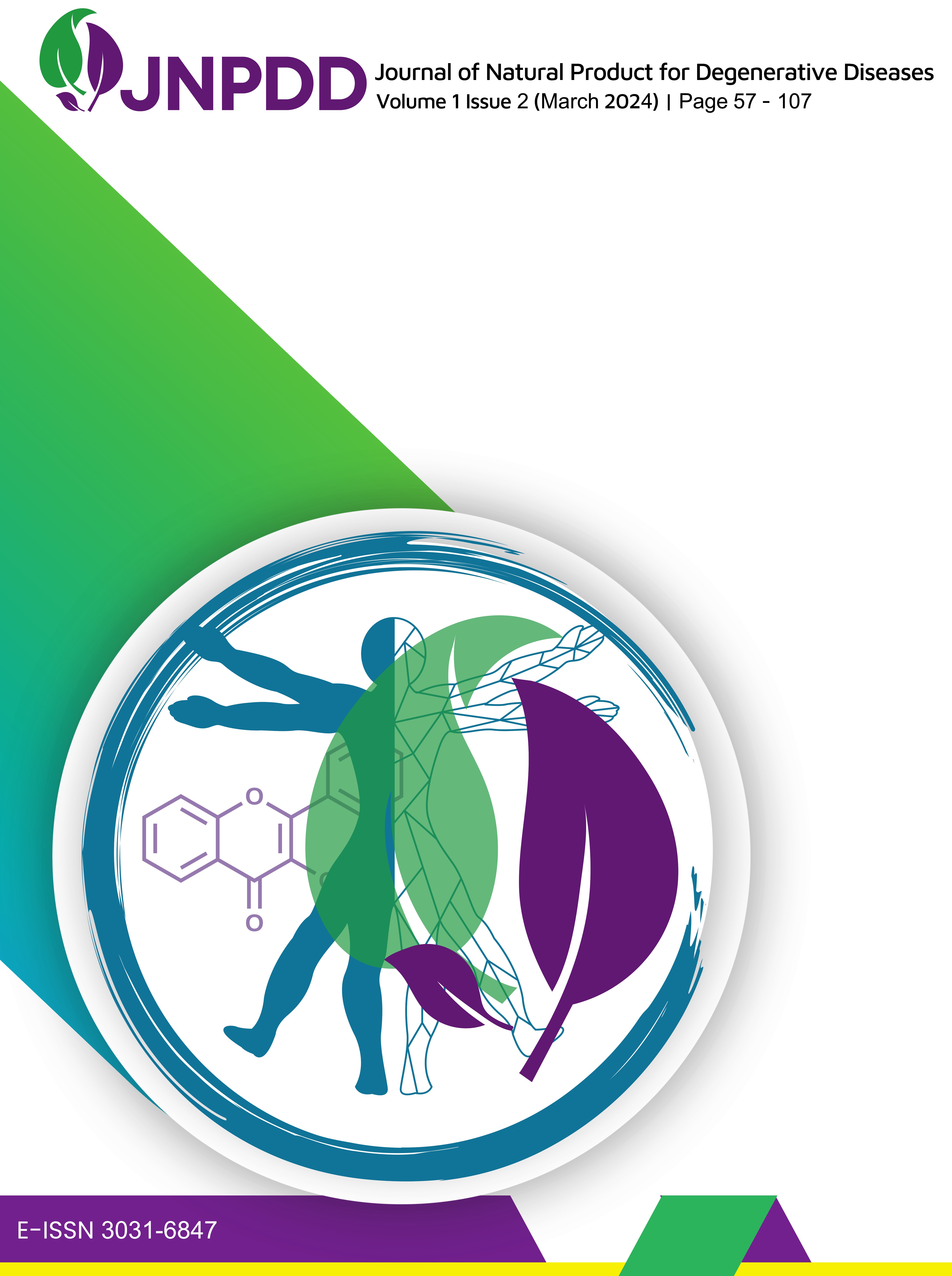Formulation of Instant Granule of Japanese Taro Tuber Extract (Colocasia esculenta L. Schoot) Based on Milk With Various Binders for Stunting Prevention
Abstract views: 232 | PDF downloads: 189
Abstract
Japanese taro root extract (Colocasia esculenta L. Schoot) includes Fe and Zn, which the body need to prevent stunting. The goal of this investigation was to see how different binder types affected the physical and chemical properties of instant granule preparations. The formula for an instant granule dry extract of Japanese taro root was developed using the wet granulation method with various binders, including PVP (F1), Mucillago amili (FII), and Na-CMC (FIII), and then tested for physical, chemical, and Fe and Zn content using Atomic Absorption Spectrophotometry. The test findings showed that the flow rate of instant granules of Japanese taro root extract formulations I, II, and III was (4.6840-4.7956) g/s, with an angle of repose of 26.86-31.08°. The granules had particle sizes ranging from 670,2295-703,2438 μm, a compressibility index of 15.91-19.00%, and moisture content of 2.80-3.58%. The immediate granule test was performed after being dispersed in water; formulations I, II, and III had dispersion periods of 40.33-50.33 seconds, specific gravity of 1.0099-1.0101 g/mL, viscosity of 1.3589-1.6352 cps, sedimentation volume of 0.940-0.955, and pH of 6.60-6.65. Formulas II using 10% muchilago amyl binder had the greatest Fe and Zn levels, at 34.40 mg/kg and 16.19 mg/kg, respectively. The statistical test revealed a significant effect of different binders on angle of repose, moisture content, dispersion time, pH, and viscosity of Japanese taro root extract granules (p-value < 0.05).
References
Republic of Indonesia Ministry of Health. Pocket book Results of the 2022 Indonesian Nutrition Status Survey (SSGI). Health Development Policy Agency, Indonesian Ministry of Health. Jakarta. 2022.
Putri R, Nuzuliana R, Kurniawati HF. Management of stunting to improve children. 2019 pp. 490–500. https://prosiding.respati.ac.id/index.php/PIC/article/view/114
Mergedus A, Janja Kristl A, Anton Ivancic A, et all. Variation of mineral composition in different parts of taro (Colocasia esculenta) corms. 2015. Food Chemistry. 170 (1): 37-46. https://www.sciencedirect.com/science/article/abs/pii/S0308814614012400
Indonesian National Standard SNI no. SNI 01-4320-1996. Instant drink powder scheme. National Standardization Body (BSN) ICS 67.180.20
Yunike K, Patihul H. Review article: effect of binding materials on the physical properties of tablets. 2019. Farmaka 16(1): 33-40. https://jurnal.unpad.ac.id/farmaka/article/view/16751
Voigt, R. Textbook of Pharmaceutical Technology Ed IV, translated by Soendani Noerno Soewandhi, R., Yogyakarta: UGM Press; 1984. 156-233.
Fathurrahmi. Analysis of mineral contents Ca, Mg, Fe and Na in natural bentonite clay. 2012. Natural Journal 12(1): 32-36. https://www.neliti.com/id/publications/115495/analysis-of-mineral-contents-ca-mg-fe-and-na-in-natural-bentonite-clay
Indonesian Ministry of Health. 2017. Indonesian Herbal Pharmacopoeia Edition II. Jakarta: Indonesian Ministry of Health.
Ni Komang N, Lutfi S. The effect of particle size and maceration time on the characteristics of virgin coconut oil extract of carrot (Daucus carota L.) as a natural dye. 2020. Journal of Agro-Industrial Engineering and Management. 8(3): 423-434. https://ojs.unud.ac.id/index.php/jtip/article/view/63869
Regulation of the minister of health of the republic of indonesia number 51 of 2016 concerning nutritional supplementation product standards. Minister of health of the republic of Indonesia.
Anonymous. Indonesian Pharmacopeia Edition V 2014. Jakarta: Ministry of Health of the Republic of Indonesia. 2014
Wardhana AE, Rani KC, Pradana AT, Jayani NI. Functional drink granule formulation combination of guava leaf ethanol extract (Psidium guajava) and klabet seed ethanol extract. 2021. MPI (Media Pharmaceutica Indonesiana). 3(4): 235-244. https://journal.ubaya.ac.id/index.php/MPI/article/view/4771/3514
Dewi R, Hadi B, Anggraini N. Effect of varying CMC Na concentration as a thickener on the physical properties of kersen leaf extract syrup (Muntingia calabura L.). National Health Seminar. Development of health services by utilizing local wisdom. 2022. https://semnaskes.unipasby.ac.id/prosiding/index.php/semnaskes-2019/article/view/50
Hasty MW, Rifda NL. Formulation and physical evaluation of a suspension preparation combination of papaya seed extract (Carica papaya l.) and teki grass tubers (Cyperus rotundus L.) with variations in the concentration of the suspending agent PGA (pulvis gummi arabici) and CMC-Na (carboxymethylcellulosum natrium). 2021. Scholar Journal of Pharmacy STIKES Utama Scholar Kudus. 5(2): 166-175. https://doi.org/10.31596/cjp.v5i2.160
Augustyn G, Polnaya F, Parinusa A. Characterization of some properties of cassava starch (Manihot esculenta, Crantz) Characterization of some properties of cassava (Manihot esculenta Crantz) starches. 2007. Buletian Penelitian BIAM. 3(51): 35-39 . https://www.researchgate.net/publication/298071893_Karakterisasi_Beberapa_Sifat_Pati_Ubi_Kayu_Manihot_esculenta_Crantz
Rowe RC, Sheskey PJ, Quinn ME. Handbook of Pharmaceutical Excipients. Sixth edit. London: Pharmaceutical Press; 2009.
Maharesi. Effect of aerosil addition on physical characteristics of dry suspension powder of meniran (Phyllanthus niruri L.) ethanol extract. Naskah publikasi. 2021. https://www.scribd.com/document/615817655/Jurnal-Infus




